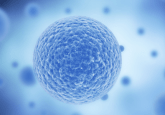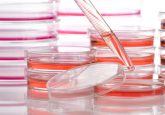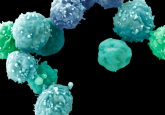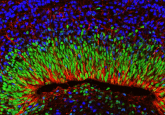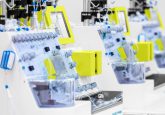Cell culture and contamination: ask the experts

In this ‘Ask the experts’ feature, a panel of key thought leaders share their perspectives on current obstacles and future developments in cell culture and contamination. For example, how can contamination of cell culture affect the final product? What challenges remain in the prevention of cell culture contamination? Discover more about this from our expert panelists, Mark White (Bio-Rad; CA, USA), Archana Bhaw-Luximon (University of Mauritius; Réduit, Mauritius) and Félix Montero-Julian (bioMérieux; Lyon, France).
Download this feature as a PDF
Cryoprotection questions:
- Please introduce yourself and your institution
- How can contamination of cell culture affect the final cell product?
- How does contamination introduced via raw materials or by user error vary?
- What are some common challenges researchers face when measuring and addressing contamination?
- What has been the biggest technological breakthrough in contamination prevention and management in cell culture?
- What are the common considerations while switching from a gold standard method to an alternative method for contamination testing?
- What challenges remain in the prevention of cell culture contamination?
- In the future, how will contamination and sources of contamination be managed?
Please introduce yourself and your institution.
Mark White (MW): My name is Mark White, and I am the Associate Director of Biopharma Product Marketing at Bio-Rad Inc. in the Digital Biology Group (CA, USA).
Archana Bhaw-Luximon (ABL): My name is Archana Bhaw-Luximon and I am an Associate Professor and Head of the Center for Biomedical and Biomaterials Research at the University of Mauritius (Réduit, Mauritius). The main research focus at our center is on the use of biomaterials from land and marine resources to engineer nano-enabled structures and scaffolds for tissue regeneration. The nanofiber and hydrogel scaffolds undergo in vitro and in vivo testing for wound healing, skeletal tissue regeneration and post-operative cancer regenerative medicine. In addition to this, I also lead the University of Mauritius, Pole of Innovation for Health.
Félix Montero-Julian (FMJ): My name is Félix A Montero-Julian and I am the Scientific Director for the Healthcare Business in the Industry Unit of bioMérieux (Lyon, France). bioMérieux provides diagnostic solutions that determine the source of disease and contamination to improve patient health and ensure consumer safety. Its products are mainly used for diagnosing infectious diseases and detecting microorganisms in food, pharmaceutical and cosmetic products. In the Industry Unit, we are currently developing solutions for the rapid detection of microbiological contaminants like Mycoplasma in cell therapy products and bioproduction processes.
How can contamination of cell culture affect the final cell product?
MW: In an academic setting, contamination is a big issue for cell culture because it affects cell growth and behavior, which may alter experimental results. In addition, certain types of contamination can cause a cell line to die. In an industrial biotech setting, contamination can cause expensive lots of therapeutic products to be scrapped due to the potential danger to a patient if the contaminated products are delivered. In both settings, one of the most common forms of contamination is Mycoplasma bacteria.
ABL: Slow growth, evaporation and contamination are some of the problems encountered with primary/secondary cell cultures and cell lines. This may result in major problems such as the loss of entire experiments, cell cultures and cell lines, and recurrent contamination may question the validity of ongoing and previous experiments and results.
Thus, maintaining good laboratory practice and conditions is important, particularly for labs that have to import cell lines through long distance and international travel.
FMJ: Microbiological contamination is disastrous during cell culture-based production processes. This represents the main threat to success of cell culture-based manufacturing and assurance of delivering safe biopharmaceutical and cell therapy products for patients’ treatment. Microbial contaminants are living organisms that replicate, increasing their number, metabolizing the nutrients of cell culture media and depleting nutrient availability to the cultured cells. In addition, some microbial metabolites can induce phenotypic changes in mammalian cells, reducing their viability and their number, and impacting production process efficiency. Further, there is a risk of cross-contamination to other cell cultures and production processes, if good manufacturing practices are not appropriately followed.
How does contamination introduced via raw materials or by user error vary?
MW: Mycoplasma bacteria can originate from animal-derived media products, laboratory personnel and cross contamination of other contaminated cell lines. In addition, because Mycoplasma is hard to detect, it is frequently found in cell banks that are stored in liquid nitrogen.
ABL: Culture contaminants may have three origins, namely chemical, biological and user-dependent.
In our area of research, it is very important that the tissue regeneration scaffolds that we are testing are devoid of any contaminants including chemical residues. Thus, sterilization of the scaffolds is an important step. However, the method of sterilization can alter the scaffold causing chemical, morphological and mechanical changes, which can affect the in vitro performance of the tissue-engineering device.
Laboratory equipment and working surfaces should be cleaned and regularly checked for signs of contamination. Handling media outside the biosafety cabinet; liquid ‘bridge’ contamination through droplets of culture medium between the culture vessel and its lid or on the neck; and flasks with loose caps are some examples of user-introduced contamination. This contaminated liquid then provides the ‘liquid bridge’ for microorganisms to grow into the culture vessel. Airborne particles and aerosols are loaded with microbial particles, and activities of lab users and equipment can generate large amounts of these. The CO2 incubator can not only provide a favorable environment for cells but also for microbial species, thus, reducing the frequency of incubator door manipulation is highly recommended. Finally, good laboratory practice is the most effective way of preventing contamination.
FMJ: In cell therapy, a major source of biological contaminants in cell culture is the patient sample itself. Cells are generally obtained by apheresis through a central venous line, but during this process there is a possible route of contamination from the patient’s skin or the catheter. In addition, during the freezing and thawing process bacterial contamination is possible, even if high standards of asepsis are maintained. Other potential sources of contamination are using non-sterile laboratory equipment, contaminated media and, sometimes, poor aseptic techniques. Airborne contaminants may also be introduced by poor lab design or poorly trained personnel.
What are some common challenges researchers face when measuring and addressing contamination?
MW: Mycoplasma is a particular challenge in cell culture contamination because it is generally too small to see with microscopes common to cell culture facilities and it does not outright kill cells, so it is frequently missed. This leads to Mycoplasma being found many times in master cell banks that are frozen in liquid nitrogen. With over 150 species of Mycoplasma, they are also hard to remove from cell lines and require long treatments with antibiotics that can affect the behavior of the cell lines being treated.
ABL: Addressing contamination is very challenging. Usually, autoclaving is used as a first measure to address contamination. Anti-fungal agents often only prevent growth, while bacterial contaminants can develop resistance to antibiotics. The judicious use of antibiotics is thus also an important factor to consider.
FMJ: The main challenge today is the fact that the compendial methods used to monitor microbial contamination are growth-based methods. That means, in order to detect these bugs, we need to wait quite a few days. In addition, some clinically relevant microorganisms are what we call ‘slow growers’, and this can extend the time to detection. During that time, no investigations and/or corrective actions can be undertaken, and release of therapeutic products for patient treatment can be delayed.
What has been the biggest technological breakthrough in contamination prevention and management in cell culture?
MW: The ability to rapidly detect Mycoplasma contamination with a PCR-based method that takes a single day versus the standard 28 days in cell culture has been critical to finding and removing Mycoplasma-contaminated cell cultures. There are still some challenges with PCR-based methods like high false-positive rates and the need for standard curves, both of which Bio-Rad is addressing with our ddPCR-based Mycoplasma test.
FMJ: One of the main breakthroughs is the development and adoption of rapid microbiological methods, especially for detection of Mycoplasma. Indeed, the use of nucleic acid testing technologies has decreased the time to results from 28 days to just 1 or 2 hours. The use of solid phase cytometry with remarkable sensitivity and rapidity now allows us to detect just one microbial cell within hours. This allows great improvements in efficiently testing raw materials and the cultured cells used in bioproduction and cell therapy products. At bioMérieux, we have worked on that for a few years.
What are the common considerations while switching from a gold standard method to an alternative method for contamination testing?
MW: The most important consideration is whether the new method performs to the standards required by the scientist or regulatory bodies. Comparison or bridging studies that enable an apples-to-apples comparison of the two methods are critical to understanding the performance characteristics of each method. If the performance is the same or better, then moving to the new method makes sense.
FMJ: First, it is essential to check the compatibility of an alternative method with the product to be tested. This is called method suitability testing. Second, is definition of the validation protocol of an alternative method, and to determine if the method is quantitative or qualitative, since the validation requirements are different. Finally, to demonstrate the equivalency of the alternative method to the compendia or ‘gold standard’ method used. I recommend review of the specific documents published by the American and European pharmacopeias, as well as the guidance documents published by the Parenteral Drug Association.
What challenges remain in the prevention of cell culture contamination?
MW: Any time a cell culture system is open to the environment, there is a chance of contamination. Methods that can minimize how often and how much a cell culture system is open will likely be needed.
ABL: To be able to face the challenges in maintaining a contamination-free cell culture environment, regular training of researchers is required so that they can detect and observe any unusual cell behavior such as change in morphology and growth rate, which may be indicative of contamination. Researchers are thus required to stay current with the latest tools, techniques and applications for cell culture practices.
Good cell culture practice and biosafety standards are of critical importance for quality and reproducibility of research. It is important to set up different scenarios of stepwise procedures to eliminate the source of contamination.
Labs are required to maintain a good cell repository and have a cell culture testing program for timely detection and decontamination. The latter can be very expensive and simple affordable options such as autoclave thermometers, PCR-based detection kits, spore test strips as well as disinfectant sprays and wipes should form part of laboratory protocols.
FMJ: A significant remaining challenge is the adaptation of these alternative methods to detection of microbial contamination in products with high cellular content (that is, products with 108–109 cells/ml) in order to assess contamination very quickly. This is a continuing technical challenge for all available rapid testing technologies.
In the future, how will contamination and sources of contamination be managed?
MW: There is a big push towards disposable cell culture vessels, even up to the bioreactor scale in large industrial settings. I expect this to continue, and testing methods that are ’in-line’ will continue to be developed and deployed to minimize the number of samples required to monitor cell culture for contamination.
ABL: It is very important that, in the future, sustainable contamination control programs should be made available for all labs with varying levels of expertise, financial means and cell culture requirements. Local strategies can then easily be derived from these approaches to promote a more inclusive vision of research. These programs should be eligible for funding as well from funding agencies.
FMJ: Most manufacturers concerned about process efficiency, product quality and patient safety will implement contamination control strategies, based on risks analysis, adoption of new microbial detection technologies, and implementing modern environmental monitoring approaches that allow them to perform microbial control trend analysis and predictions.
Meet the experts
 Mark White | Associate Director of Biopharma Product Marketing at Bio-Rad (CA, USA)
Mark White | Associate Director of Biopharma Product Marketing at Bio-Rad (CA, USA)
Mark White is the Associate Director of Biopharma Product Marketing at Bio-Rad (CA, USA). He has played a key role in the development of multiple core technology capabilities and assays alongside a multidisciplinary team of biologists and engineers at Bio-Rad and previously at Berkeley Lights Inc. (CA, USA). Mark obtained his PhD in Biomedical Sciences at the University of California, San Francisco (CA, USA).
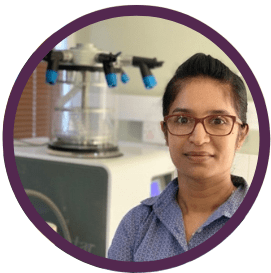 Archana Bhaw-Luximon | Associate Professor and Head, Center for Biomedical and Biomaterials Research (CBBR), University of Mauritius (Réduit, Mauritius)
Archana Bhaw-Luximon | Associate Professor and Head, Center for Biomedical and Biomaterials Research (CBBR), University of Mauritius (Réduit, Mauritius)
Archana Bhaw-Luximon is from the Biomaterials, Drug Delivery and Nanotechnology Unit at CBBR. The main focus of the Unit is on the use of biomaterials from land and marine resources to engineer nano-enabled structures for tissue regeneration. The Unit consists of a multidisciplinary team with chemistry, materials, biology, medical, nanomedicine and predictive modeling expertise.
Archana was The World Academy of Sciences Young Affiliate and contributed to human capacity building initiatives for early-career African scientists. She received the UNESCO Merck Best African Woman Researcher Award in 2017. The team received the United Nations Economic Commission for Africa Nanotechnology Forum Award in December 2020 for the engineering of an antiviral nanotech mask in the context of COVID-19.
 Félix Montero-Julian | Scientific Director for the Healthcare Business of bioMérieux (Lyon, France)
Félix Montero-Julian | Scientific Director for the Healthcare Business of bioMérieux (Lyon, France)
Félix Montero-Julian is the Scientific Director for the Healthcare Business of bioMérieux (Lyon, France). Felix has over 25 years of experience in industrial and clinical diagnostics, and previously served as the Chemunex R&D Director in bioMérieux. Felix is a member of different scientific organizations, such as the Parenteral Drug Association (MD, USA), and served as an expert in a panel for the Development of Compendial Rapid Sterility Tests for the US Pharmacopeia (MD, USA). Félix has been, and continues to be, extensively involved in the implementation and acceptance of rapid and alternative microbiological methods. He is a prominent speaker at congresses and conferences and a regular contributor to bioMérieux scientific white papers.
Félix has extensive technical experience that includes the development of in vitro diagnostic and research use reagents and applications, cell and tissue culture systems, alternative and rapid microbiological methods, sterility testing, Mycoplasma detection, compendia methods, and cell and gene therapy processes.
Disclaimers
The opinions expressed in this interview are those of the interviewees and do not necessarily reflect the views of RegMedNet or Future Science Group.
This feature was produced in association with Bio-Rad.

